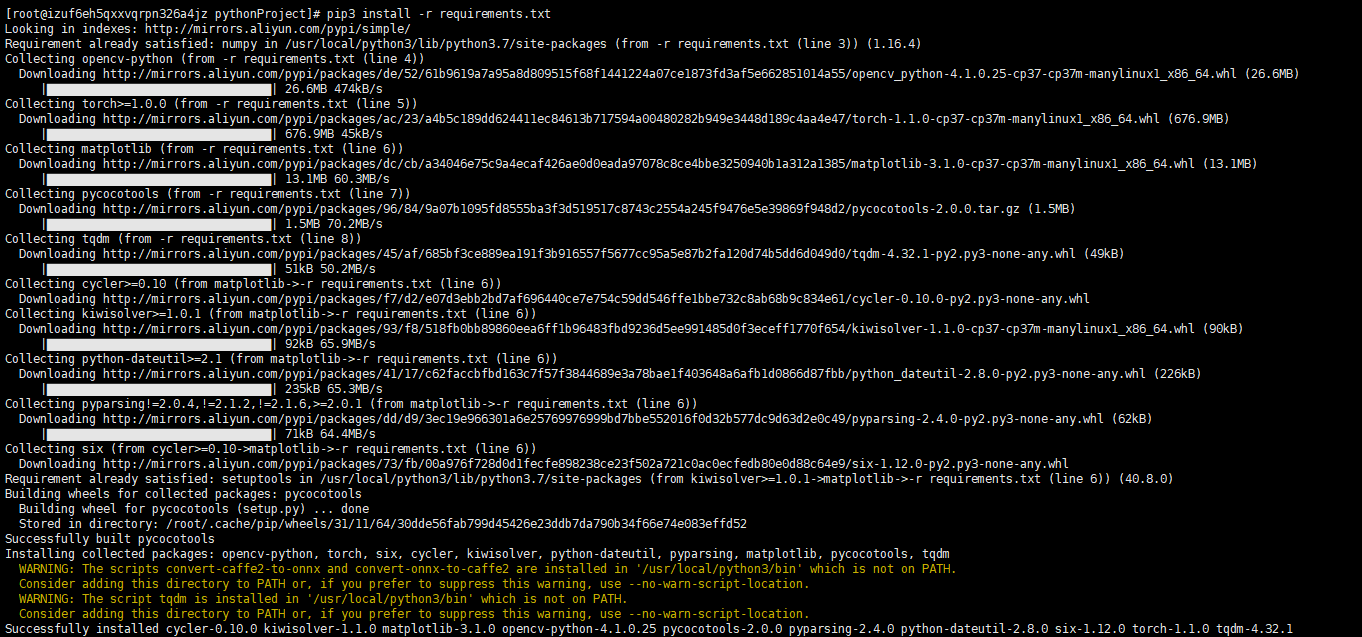
To list images, simply run the docker images command. As we are currently working in the terminal let’s take a look at listing images using the CLI. One is to use the CLI and the other is to use Docker Desktop. To see a list of images we have on our local machine, we have two options. => => naming to docker.io/library/python-docker => COPY requirements.txt requirements.txt => FROM docker.io/library/python:3.8-slim-buster => load metadata for docker.io/library/python:3.8-slim-buster Your Dockerfile, and should be the first line in Dockerfiles. Must appear before any other comment, whitespace, or Dockerfile instruction in
#Pip3 install requirements.txt upgrade
To upgrade the parser before starting the build. When parsing the Dockerfile, and allows older Docker versions with BuildKit enabled While optional, this directive instructs the Docker builder what syntax to use The first line to add to a Dockerfile is a # syntax parser directive. We recommend using the default ( Dockerfile) for your project’s primaryĭockerfile, which is what we’ll use for most examples in this guide. In the docker build reference to learn about the -file option. Such Dockerfiles can then be used through the -file (or -f shorthand) A commonĬonvention is to name these Dockerfile. Some projects may need distinct Dockerfiles for specific purposes. Without having to specify additional command flags. Using the default name allows you to run the docker build command The default filename to use for a Dockerfile is Dockerfile (without a file-Įxtension). The root of your project, create a file named Dockerfile and open this file in Let’s walk through the process of creating a Dockerfile for our application. When we tell Docker to build our image by executing the docker buildĬommand, Docker reads these instructions, executes them, and creates a Docker

Now that our application is running properly, let’s take a look at creating a Dockerfile.Ī Dockerfile is a text document that contains the instructions to assemble aĭocker image. If you work with requirement files then the option should be added.

#Pip3 install requirements.txt full
* The following required packages can not be built:ĮRROR: Command errored out with exit status 1: python setup.py egg_info Check the logs for full command output.127.0.0.1 - "GET / HTTP/1.1" 200 - If the -r option is skipped pip will try to install package requirements.txt. Tkagg: yes [installing run-time loading from Python Tcl / Qhull: yes [pkg-config information for 'libqhull' could not

Png: no [pkg-config information for 'libpng' could not Libagg: yes [pkg-config information for 'libagg' could notįreetype: no [The C/C++ header for freetype2 (ft2build.h)Ĭould not be found. Release = platform.linux_distribution().lower()ĪttributeError: module 'platform' has no attribute 'linux_distribution'Įdit setup.cfg to change the build options ERROR: Command errored out with exit status 1:Ĭommand: /usr/bin/python3 -c 'import sys, setuptools, tokenize sys.argv = '"'"'/tmp/pip-install-lx3f9sv0/matplotlib/setup.py'"'"' _file_='"'"'/tmp/pip-install-lx3f9sv0/matplotlib/setup.py'"'"' f=getattr(tokenize, '"'"'open'"'"', open)(_file_) code=f.read().replace('"'"'\r\n'"'"', '"'"'\n'"'"') f.close() exec(compile(code, _file_, '"'"'exec'"'"'))' egg_info -egg-base /tmp/pip-install-lx3f9sv0/matplotlib/pip-egg-infoĬwd: /tmp/pip-install-lx3f9sv0/matplotlib/įile "/tmp/pip-install-lx3f9sv0/matplotlib/setup.py", line 170, in įile "/tmp/pip-install-lx3f9sv0/matplotlib/setupext.py", line 539, in install_help_msg



 0 kommentar(er)
0 kommentar(er)
